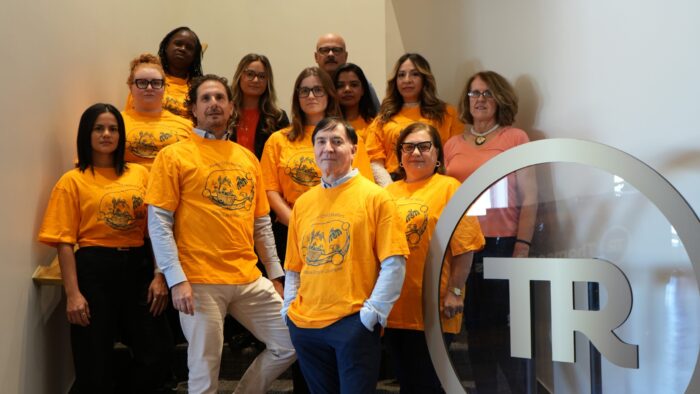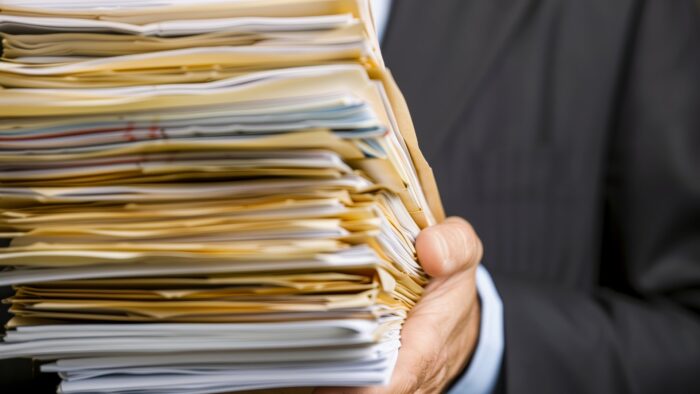If You Slip And Fall On Snow Or Ice You Must Take Steps To Protect Your Right To Sue
Author(s): Adam J. Karakolis
February 12, 2025

In true February fashion, Ontario’s snowstorms bring hidden ice and slippery sidewalks. A fall can happen in an instant – so apart from being on the lookout, you need to know your rights too.
In 2020, the Ontario Legislature amended the Occupiers’ Liability Act, R.S.O. 1990, c O.2. to impose additional steps that a victim of a slip and fall (caused by snow or ice) must take before being permitted to sue a negligent party for their injuries. These steps, which are set out below, place onerous additional notice requirements that accident victims must be aware of.
The amendment created section 6.1, which states (in part) as follows:
Notice period —injury from snow, ice
6.1 (1) No action shall be brought for the recovery of damages for personal injury caused by snow or ice against a person or persons listed in subsection (2) unless, within 60 days after the occurrence of the injury, written notice of the claim, including the date, time and location of the occurrence, has been personally served on or sent by registered mail to at least one person listed in subsection (2). 2020, c. 33, s. 1.
Same
(2) The persons referred to in subsection (1) are the following:
- An occupier.
- An independent contractor employed by the occupier to remove snow or ice on the premises during the relevant period in which the injury occurred. 2020, c. 33, s. 1.
In short, if you intend to sue a private property owner in respect of injuries caused by snow or ice you should always place that property owner on notice within 60 days of the injury.
Below is a summary of the steps you should take in these circumstances.
What must I do if I slip and fall on ice or snow?
According to s. 6.1 of the Occupiers’ Liability Act, a person injured in a slip and fall involving snow or ice must take the following steps within 60 days of the date they fell to preserve their right to sue for their injuries.
1. Step one: Determine the occupier or the snow contractor of the property where the fall occurred
The term occupier is defined in the Occupiers’ Liability Act. An occupier can be a person who is in physical possession of the area where the victim fell. An occupier can also be a person who is responsible for the area where the victim fell. Responsibility includes having control over the conditions of the area (for example, being responsible for cleaning the area); having control over the activities carried out in the area (for example, the authority to stop people from riding bikes in the area); or having control over persons allowed to enter the area (for example the authority to tell people to leave the area). An occupier often (but not always) includes an owner of the area or a person leasing the area from the owner.
The victim must determine at least one occupier of the area where the victim fell. There can be (and often is) more than one occupier. For the purposes of protecting their right to sue, the victim should always try to identify as many occupiers as possible and should do so as soon as possible after the injury. A lawyer can help identify the possible occupiers at an early stage.
The victim should try to identify any independent contractors employed by the occupier(s) to remove snow or ice in the area on the date the victim fell. These independent contractors are often companies who are hired by another occupier to provide snow plow or maintenance services.
2. Step two: Write a letter with the details of the victim’s slip and fall.
The victim must next write a letter(s) addressed to each occupier/contractor identified in Step 1. Each letter should contain, at minimum, the following information as required in s. 6.1(1):
a.) the date on which the fall occurred;
b.) the time at which the victim fell;
c.) the location of where the victim fell (the victim should, at a minimum, include an address and brief description of the location. More information is often helpful)
d.) a sentence or two stating that the victim intends to bring a claim against the occupier/contractor for damages for personal injury resulting from the slip and fall incident occurring at [time] on [date] at [location].
Anyone wishing to sue should consult a lawyer at an early stage. A lawyer will know the exact language to use and what information to include. You should not rely on this article to determine exactly what information/language to include in your letter.
3. Step three: Serve or mail the letter to the occupier(s)/contractor(s)
Section 6.1(1) requires the slip and fall victim to either serve or send the letter(s) from step two on the occupier(s)/contractor(s) identified in step one. The victim can serve the letter by paying a process server. This is a more expensive option. The cheaper option involves mailing the letter by registered mail within 60 days of the fall to the occupier(s)/contractor(s).
Once the victim has completed these steps, they have preserved their right to sue.
However, if the victim intends to sue, they will still need to bring an action within two years of the date of the fall. Complying with steps 1-3 above does not qualify as bringing an action. Bringing an action requires that formal legal steps be taken, which are outside the scope of this article. Anyone wishing to sue should consult with a lawyer to determine what steps are required to bring the action within two years of the date of the injury.
What if I discovered an occupier I did not know about more than 60 days after my fall?
Section 6.1(7) states that as long as the victim has given notice (steps 1 to 3 above) to at least one occupier or contractor before the 60-day time limit expires, the victim is allowed to bring an action against any other occupiers or contractors they later identify but did not initially give notice to.
However, since it is not always clear who the occupier or contractor is, it is prudent for the victim to give notice to any potential occupier and contractor before 60 days have expired. If the victim only gives notice to one party who they think is an occupier and later (after 60 days) discovers that this party is not an occupier, the victim will not have met the requirement to give notice to an occupier within 60 days of the occurrence of the injury.
What if my family member died as a result of the slip and fall?
Section 6.1(5) eliminates the requirement to give notice if the slip and fall results in the injured person’s death.
What if I do not give notice within 60 days?
Section 6.1(6) states that if the victim fails to give notice within 60 days, the victim will be prevented from bringing an action in court for the victim’s personal injuries unless a judge finds that the occupier(s)/contractor(s) would not be prejudiced in defending the victim’s case and there is a reasonable excuse for:
a.) the failure to give (serve or mail) notice to the occupier; and
b.) the failure of the notice to contain the information required in s. 6.1(1) (see step 2 above).
Prejudice to the occupier involves (for example) the destruction of evidence about the slip and fall that naturally occurs with the passage of time. Evidence of incapacity may qualify as a reasonable excuse. However, the failure to give notice simply because a victim did not know about the requirement to give notice is typically not an argument that gets a victim around the similar notice requirement as it appears in other legislation.
What if I fell on city/municipal property?
If the victim fell on city or municipal property, the period for giving notice is 10 days rather than 60 days (see the City of Toronto Act, 2006, SO 2006, c 11, Sch A; and Municipal Act, 2001, SO 2001, c 25). The contents of notice for a slip and fall on city or municipal property are outside the scope of this article. A victim who slipped and fell on city or municipal property should contact a lawyer as soon as possible to inquire about the steps they need to take to preserve their right to sue.
If there is any uncertainty regarding whether the location of the fall was on municipal versus private property, the victim should always err on the side of caution and place the appropriate municipality on notice within 10 days of the injury.
It is unfortunate that the provincial government has added these additional notice requirements for victims. It is incumbent on victims to seek legal advice as soon as possible if they find themselves in the unfortunate position of having experienced an injury due to conditions of snow or ice.
Thomson Rogers offers free consultation, so please feel free to reach out to us at any time. We are here to help.
Adam Karakolis is an Associate Lawyer at Thomson Rogers LLP and can be reached at 416-868-3181 or by email.
For Thomson Rogers LLP updates, please subscribe to our email list here.
Share this





